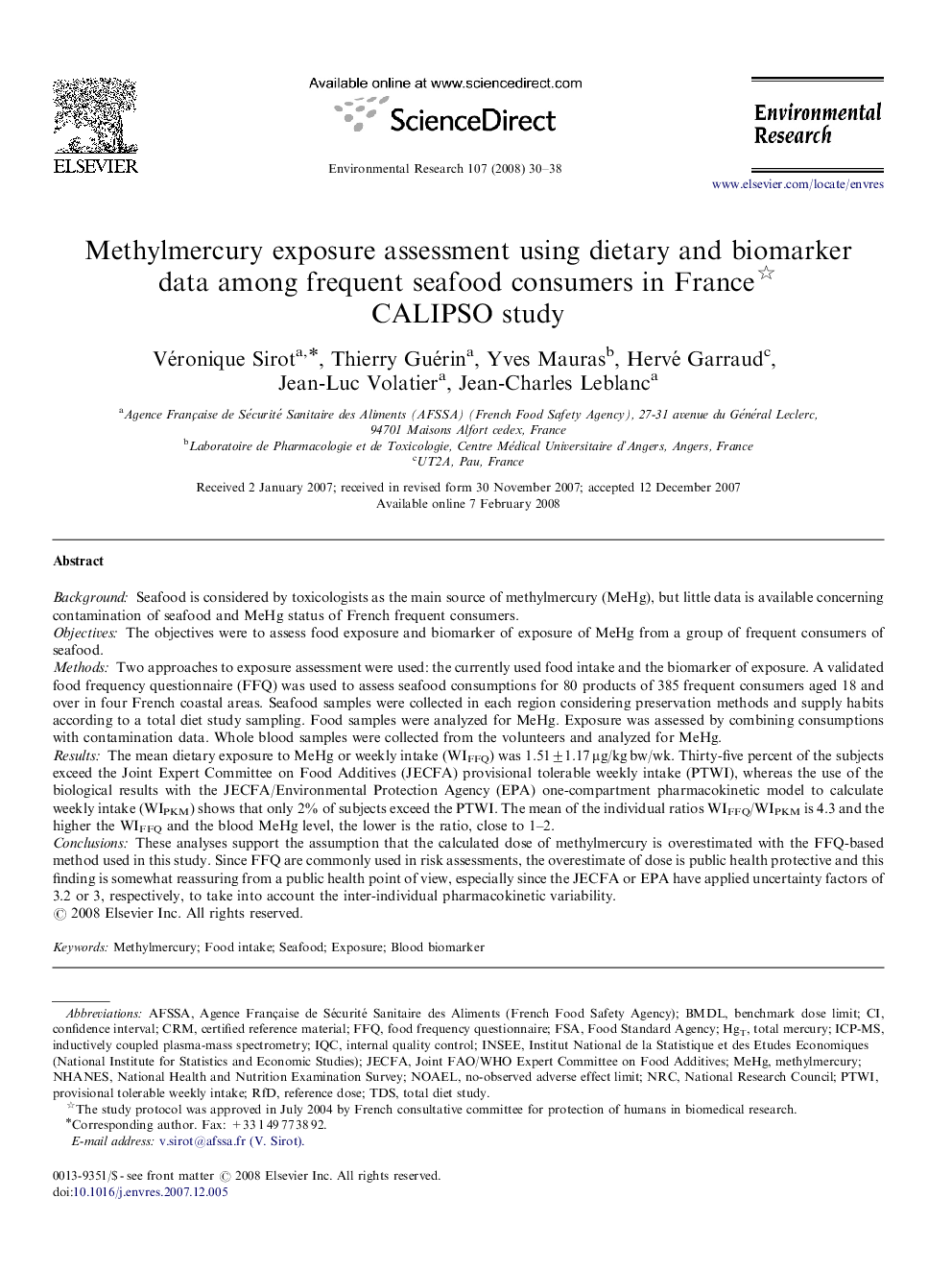| کد مقاله | کد نشریه | سال انتشار | مقاله انگلیسی | نسخه تمام متن |
|---|---|---|---|---|
| 4470809 | 1314448 | 2008 | 9 صفحه PDF | دانلود رایگان |

BackgroundSeafood is considered by toxicologists as the main source of methylmercury (MeHg), but little data is available concerning contamination of seafood and MeHg status of French frequent consumers.ObjectivesThe objectives were to assess food exposure and biomarker of exposure of MeHg from a group of frequent consumers of seafood.MethodsTwo approaches to exposure assessment were used: the currently used food intake and the biomarker of exposure. A validated food frequency questionnaire (FFQ) was used to assess seafood consumptions for 80 products of 385 frequent consumers aged 18 and over in four French coastal areas. Seafood samples were collected in each region considering preservation methods and supply habits according to a total diet study sampling. Food samples were analyzed for MeHg. Exposure was assessed by combining consumptions with contamination data. Whole blood samples were collected from the volunteers and analyzed for MeHg.ResultsThe mean dietary exposure to MeHg or weekly intake (WIFFQ) was 1.51±1.17 μg/kg bw/wk. Thirty-five percent of the subjects exceed the Joint Expert Committee on Food Additives (JECFA) provisional tolerable weekly intake (PTWI), whereas the use of the biological results with the JECFA/Environmental Protection Agency (EPA) one-compartment pharmacokinetic model to calculate weekly intake (WIPKM) shows that only 2% of subjects exceed the PTWI. The mean of the individual ratios WIFFQ/WIPKM is 4.3 and the higher the WIFFQ and the blood MeHg level, the lower is the ratio, close to 1–2.ConclusionsThese analyses support the assumption that the calculated dose of methylmercury is overestimated with the FFQ-based method used in this study. Since FFQ are commonly used in risk assessments, the overestimate of dose is public health protective and this finding is somewhat reassuring from a public health point of view, especially since the JECFA or EPA have applied uncertainty factors of 3.2 or 3, respectively, to take into account the inter-individual pharmacokinetic variability.
Journal: Environmental Research - Volume 107, Issue 1, May 2008, Pages 30–38